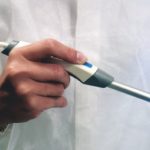Implantable Devices and Parylene
Posted by Sean Horn
Friday, December 18, 2015 8:40
@ 8:40 AM
Implantable Medical Devices and the Uses of Parylene
In surgery, materials grafted or inserted onto or within a bodily structure or a functioning organ, are considered implanted. Although a medical implant may be composed of such bodily tissue as a blood vessel or tendon, many are made from artificial substances, surgically positioned within the body to improve the patient’s health by upgrading the performance of affected organ or structure.
Parylene conformal coatings are linear and polycrystalline substrate coverings that are also highly biocompatible and integratable within the human body. Also chemically inert, colorless and clear, their lack of pigmentation minimizes possible leakage into the bodily system during use, protecting from potential infection or irritation of the blood stream and internal organs.
Chemical Vapor Deposition
Parylene coatings differ from other commercial conformal coatings. They rely on a chemical vapor deposition (CVD) process rather than wet techniques — dipping, spraying, or brushing — for coating application.
Parylene’s vapor-phase, chemical-vacuum polymerization process converts powdered parylene into a gaseous form at the molecular level. Reheated to high temperatures, the vapor reverts to a single molecule construction that simultaneously coats all parts of an assembly or component as a durable and transparent, polymerized film.
These features promote exceptional crevice/multi-layer penetration for all components and instruments, as well as dependable levels of dry-film lubricity. The superior coating is uniform, pinhole-free, and highly dielectric, without the bridging, puddling or run-off common to conformal coatings using wet application processes. Its capacity to deliver ultra-thin yet resilient coatings makes parylene ideal for most of the MEMS/nano technologies increasingly used for medical implantables.
The Benefits of Parylene-Coated Implantables
 Since CVD-applied parylene coatings adhere in a device-specific format to the entire range of vacuum-stable materials and devices, surface coverings conform explicitly to the contours of the substrate. In addition to biocompatibility, parylene coatings are biostable, inert, non-toxic and meet FDA compliance guidelines, increasing antimicrobial protection during extended use. These properties assure protection of coated implantables through a diversity of extreme operating conditions typical to internal medical component usage, ensuring implanted devices perform as designed for greater periods of time.
Since CVD-applied parylene coatings adhere in a device-specific format to the entire range of vacuum-stable materials and devices, surface coverings conform explicitly to the contours of the substrate. In addition to biocompatibility, parylene coatings are biostable, inert, non-toxic and meet FDA compliance guidelines, increasing antimicrobial protection during extended use. These properties assure protection of coated implantables through a diversity of extreme operating conditions typical to internal medical component usage, ensuring implanted devices perform as designed for greater periods of time.
Primary implants of this type include:
- Biochemical and tissue engineering devices and techniques benefit from parylene coatings.
- Cardiac pacemakers and similar cardiac-assist devices (CADs), which ensure regular heartbeat, to prevent cardiac failure or malfunction. For instance, the delicate but complex medical electronics of such implantable CADs as cardioverter-defibrillators (ICDs), and pacemakers are protected by parylene’s superior conformal coatings. Parylene seals these instruments from the potentially corrosive impact of bodily fluids circulating in the heart’s vicinity, while simultaneously eliminating the body’s exposure to electrical charges or materials leaking from the implanted CAD, further protecting the patient.
- Cochlear implants, devices consisting a microphone, signal processor, external transmitter, and implanted receivers that improve patient hearing.
- Coronary stents, small mesh tubing used to treat narrow or constricted blood vessels and weak arteries, carrying blood to and from the heart. Similar arterial/vessel stents can be applied for like purposes to stimulate blood transmission in other parts of your body.
- Dental implants of several types, (1) endosseous implants, dental constructions replacing teeth, (2) subperiosteal frames, connecting gum tissue to the jawbone, and (3) transmandibular implants that pass through the jawbone and gum tissue into the mouth, attaching directly to a denture.
- Hip prostheses, mechanical constructions that replace hip joints.
- MEMS/nano devices for diagnostic monitoring of patients’ conditions are aided by parylene’s dependable, ultra-thin, secure conformal coating. Minute component and process protection assures these medical devices maintain their necessary functions throughout their specialized applications. Parylene’s dielectrical properties generate an electrical barrier between MEM’s internal electronics and electrical charges normally produced by bodily systems.
- Radioactive implants, used as a component of chemotherapy for cancer treatment.
- Sensors and related hybrid-flexible sensing platforms recording real-time physiological activities of organs and tissue.
These devices represent just a sampling of the growing list of efficient parylene-protected and assisted implantable medical applications.
Conclusion
Implantables coated with parylene have repeatedly demonstrated their reliable utility for function-focused internalized medical devices.
Instruments coated with parylene can be safely situated in less accessible, more-constricted regions of the body, difficult-to-reach places often requiring critical monitoring and care. These segments of the body are precisely those where implantable devices are most needed. Ultra-thin coating layers provide superior component protection, adding only minimal mass to the device, extending MEMS/nano applications. Parylene’s low dissipation factor supports improvements of both device performance and patient treatment, by extending the implantable’s durability and functional capacity.
Parylene coating’s use for implantable devices includes CADs, catheters, electrosurgical devices (ESUs), and stents, The value and use of parylene-protected medical instruments and procedures will proliferate, as technology develops. New ways of applying parylene continue to be produced to coincide with technological expansion in the medical industry; new varieties of parylene are similarly evolving to match these developments.
If you’re looking for parylene coating services for implantable devices, contact Diamond-MT today. Get started by calling us at 814-535-3505 or completing a quote request.
Comments
Homepage 4/17/2020. 10:17:10 AM
... [Trackback] [...] Informations on that Topic: blog.paryleneconformalcoating.com/whats-the-difference-between-potting-and-conformal-coating/ [...]

londondrugscanada.bigcartel.comlondon-drugs 4/17/2020. 10:17:10 AM
cialis uk https://londondrugscanada.bigcartel.com/london-drugs This is nicely expressed. !